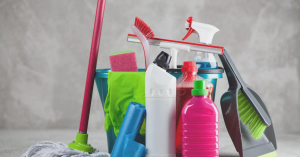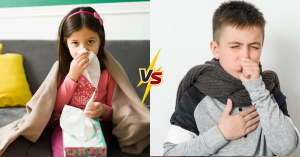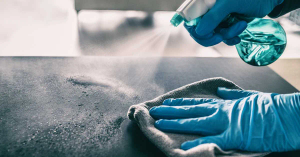Keratin treatments have become increasingly popular, especially among teenagers who desire silky, straight hair. Social media trends and peer influence often push young girls toward these treatments, but many are unaware of the risks involved. While keratin treatments can offer temporary smoothness and shine, they also come with potential health hazards, especially for developing bodies.
If you are a parent or a teen considering a keratin treatment, this article will help you understand the different types, their impact, the safest options, and precautions to take.
Types of Keratin Treatments and Their Risks
1. Formaldehyde-Based Keratin Treatments (Most Damaging)
These are the most effective but also the riskiest. Formaldehyde, a known carcinogen, is released as a gas during the treatment process, exposing both the client and the stylist to harmful fumes. Side effects can include:
• Eye irritation, headaches, and difficulty breathing
• Scalp irritation and hair thinning
• Long-term exposure may increase cancer risk
Dermatologists and health experts strongly advise against formaldehyde-based treatments, especially for teenagers.
2. Formaldehyde-Free Keratin Treatments (Moderate Damage)
These treatments claim to be safer alternatives, using glyoxylic acid or similar compounds instead of formaldehyde. While they do not release toxic fumes, they still use strong chemicals that can weaken hair over time. Side effects may include:
• Dryness and increased breakage with repeated use
• Allergic reactions in sensitive individuals
3. Brazilian Blowout (High Risk, Similar to Formaldehyde-Based Treatments)
This treatment is almost identical to formaldehyde-based keratin treatments. It smooths hair effectively but contains harmful chemicals that can cause serious health risks. The FDA has issued warnings against Brazilian Blowout treatments due to high formaldehyde exposure.
4. Cysteine Treatments (Milder Alternative, but Less Effective)
Cysteine is an amino acid that temporarily smooths hair with less damage. This treatment is formaldehyde-free, making it a safer option for teens, but results last only about two to three months. Risks include:
• Slight dryness with frequent use
• Weaker smoothing effects compared to traditional keratin treatments
5. Taninoplastia (Least Damaging, Best for Teen Girls)
This is the safest option for teenagers. It uses tannins (plant-based compounds) to strengthen and smooth hair naturally without toxic chemicals. It is suitable for girls as young as 12-13 years old. However, it does not provide long-lasting straightness like other keratin treatments.
What Age Is Safe for Keratin Treatments?
• Dermatologists generally recommend avoiding keratin treatments for girls under 16 years old, as their scalp and hair are still developing.
• For younger teens (12-15 years), only mild treatments like Taninoplastia or Cysteine treatments should be considered.
• Formaldehyde-based and Brazilian Blowout treatments should be strictly avoided for anyone under 18.
Parental Guidance: Dealing with Peer Pressure
Teenagers often want to follow beauty trends because their friends are doing it. As a parent, here’s how you can handle the situation:
1. Educate your child – Talk to them about the potential risks and long-term hair damage caused by chemical treatments.
2. Encourage self-confidence – Help them embrace their natural hair and explore safer alternatives like deep conditioning and heat-free styling.
3. Set boundaries – If your teen insists on a treatment, consider safer options and ensure they are done under expert supervision.
4. Consult a dermatologist – Before any chemical treatment, a hair and scalp assessment is recommended to prevent allergic reactions or excessive hair damage.
Choosing the Right Salon: What to Look For
If your teen is determined to get a keratin treatment, it is crucial to choose the right place:
• Certified professionals – Ensure the salon has licensed hair specialists trained in safe application techniques.
• Ventilation – The salon must have proper air circulation to reduce inhalation of harmful fumes.
• Check the ingredients – Avoid any treatment containing formaldehyde, methylene glycol, or formalin.
• Patch test – A patch test on the skin should be done to check for allergic reactions before full application.
• Aftercare advice – The stylist should provide proper aftercare instructions, such as using sulfate-free shampoos to maintain hair health.
Conclusion
Keratin treatments may seem like a quick fix for frizzy hair, but they come with serious health concerns, especially for teenagers. Parents should be aware of the risks and help their children make informed decisions. If a keratin treatment is necessary, choose the safest option and ensure it is done in a well-ventilated, professional salon with expert guidance.
Encouraging teens to embrace their natural beauty and prioritize hair health over trends is the best approach to long-term hair care.








